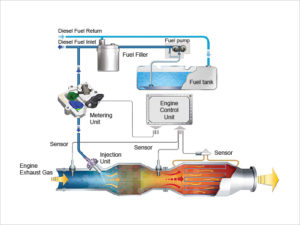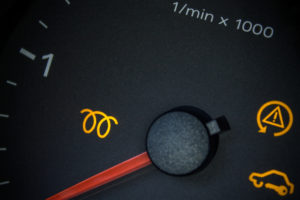Question: Diesel Particulate Filters (DPF). What is it? What are the common problems associated with DPF?
The main purpose of DPF is to absorb particulate emissions created during the start-up phase of an engine from cold. These absorbed particulates are later superheated and burned off during the regeneration cycle of the DPF.
There are two main types of DPF cycles:
Passive Regeneration
Passive regeneration takes place automatically when a diesel car is running at high speed resulting into high exhaust temperature. Lot of cars don’t get this type of use though so manufacturers have to design-in ‘active’ regeneration where the engine management computer (ECU) takes control of the process.
Active Regeneration
Active Regeneration occurs when the level of soot in the filter reaches around 45%. The ECU makes small adjustments to the fuel injection timing and increases the exhaust gas temperature. This increases the exhaust temperature which then initiates the regeneration process, burning away the soot trapped in the DPF.
Question: The glow plug symbol is flashing. Why? What should be done?
Answer: The flashing glow plug symbol means that the DPF regeneration has not been completed during normal driving and now DPF has reached its maximum saturation at which it can still be regenerated. It greatly depends on variant and Model Year, but is in the range of 105% – 125%.This happens mainly due to:
- Repeated short distance journeys, i.e. high soot loading while at the same time regeneration of the DPF does not take place because the conditions necessary were not fulfilled.
- Frequent interrupted regenerations, i.e. the engine was switched off during regeneration. Applies to short journey drivers who have at least fulfilled the conditions for triggering regeneration. If the glow plug light flashes, the vehicle) Engine running since start for longer than 2 minutes.
b.) Calculated saturation higher than 80%.
c.) Coolant temperature over 70°C for at least 2 minutes.
d.) No DPF-relevant faults stored in system.
e.) A defined vehicle speed threshold must have been exceeded (e.g. for >80% loading, 100 km/h)
Question: Under what conditions is regeneration interrupted/ended once it has started?
Answer: Usually when regeneration has been effectively completed, or:
a.) After a maximum regeneration time (20 – 25 min.).
b.) If the engine is switched off or has stalled.
c.) If the engine is left idling for a long time (5 – 10 min.).
d.) If 1000°C is identified by the exhaust temperature sensor.
e.) If during regeneration, a fault is detected on the components relevant for combustion (injection/intake system). If a regeneration is disturbed once started but before it has been 50% completed, the glow plug
Article Ref: Honest John
Tags: dpf cleaning, dpf removal, dpf solution, regeneration





